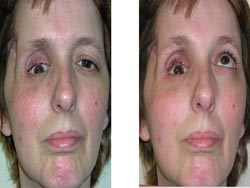
The maxillofacial specialist performs the proper treatment of facial injuries.
These professionals must be well versed in emergency care, acute treatment and long term reconstruction and rehabilitation – not just for physical reasons but emotional as well.
Oral and Maxillofacial Surgeons are trained, skilled and uniquely qualified to manage and treat Facial Trauma. Injuries to the face, by their very nature, impart a high degree of emotional, as well as physical trauma to patients.
The science and art of treating these injuries requires special training involving a “hands on” experience and an understanding of how the treatment provided will influence the patient’s long term function and appearance.
Dr Rahul Meets And Exceeds These Modern Standards. He Is On Staff At Local Hospitals And Delivers Emergency Room Coverage For Facial Injuries, Which Include The Following Conditions.
- Facial lacerations
- Intra oral lacerations
- Avulsed (knocked out) teeth
- Fractured facial bones (cheek, nose or eye socket)
- Fractured jaws (upper and lower jaw)
What Are The Types Of Injuries?
- Soft Tissue Injuries of the Maxillofacial Region.
- Bone Injuries of the Maxillofacial Region
- Soft Tissue Injuries of the Maxillofacial Region
- Injuries to the Teeth and Surrounding Dental Structures
What Is Mandiblibular Fractures?
Mandible fractures are lower jaw fractures. The specific anatomic location of the fracture is dependent on the mechanism of injury and direction of the traumatic blow.
What Are LeFort I, II, And III Fractures?
All LeFort fractures affect the occlusal relationship. Therefore, a primary goal in the treatment of these fractures is the restoration of the occlusal relationship. Principles of treatment are similar to those in the treatment of mandible fractures. All LeFort II and III level fractures involve the bony orbit and can therefore result damage to the eye.
What Is Zygoma Fracture?
Patients with fractures of the zygoma often present with pain, difficulty opening, visual changes and cosmetic defects.
What Are Nasal-Orbital-Ethmoid Fractures?
The nasal-orbital-ethmoid area is bordered by the orbital cavities laterally. Anteriorly, the space is demarcated by the frontal process of the maxilla, the nasal bones, and the frontal process of the frontal bone.
What Is Orbital Floor Fracture?
The classic orbital blowout fracture, by definition, implies an intact orbital rim and a disruption of one of the walls or floor of the orbit. If the floor or the orbit is fractured and displaced one may experience prolapse of the orbital tissues into the maxillary sinus.
What Is Mandiblibular Fractures?
Mandible fractures are lower jaw fractures. The specific anatomic location of the fracture is dependent on the mechanism of injury and direction of the traumatic blow.


